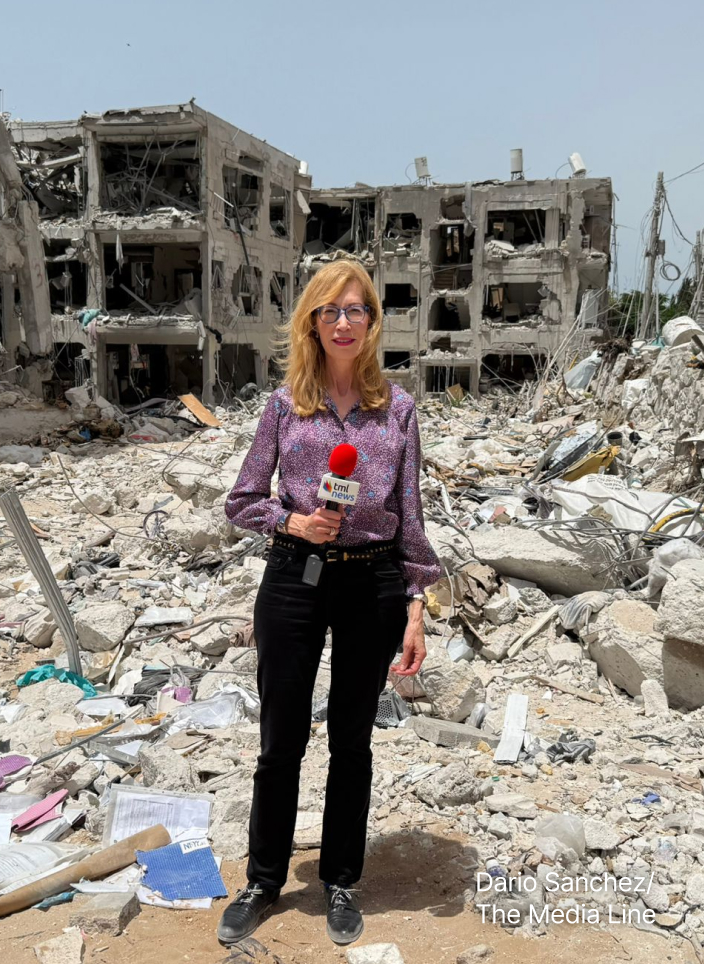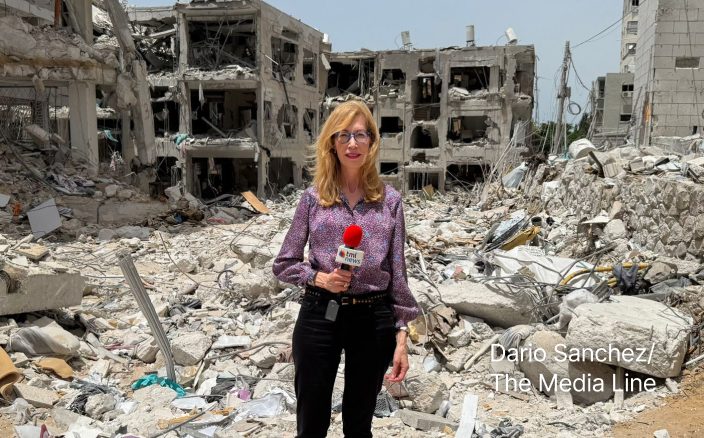Tehran Seeks Comeback in Syria Through Iraqi Training Camps
Syrian defectors are regrouping in Iranian-supervised camps in Iraq as Tehran scrambles to retain military and political influence amid regional power shifts
Iran is quietly rebuilding its military influence in post-Assad Syria by training former regime loyalists in remote Iraqi desert camps, using Shiite militias and Iranian Revolutionary Guard officers to shape a new pro-Tehran fighting force just miles from the Syrian border. Military and eyewitness sources confirmed to The Media Line that such training camps have popped up in western Iraq’s Anbar desert, which borders Syria.
After the fall of President Bashar Assad’s regime in Syria, several Syrian military units loyal to Assad fled to the Iraqi border. They brought with them weapons and equipment including armored vehicles and personnel carriers, tanks, and artillery. Iraqi authorities confiscated their weapons to the Anbar desert and housed the fighters in several provinces.
At the time, Iraqi authorities reported that more than 5,000 military personnel had fled from Syria to Iraq—including officers and soldiers—and said they would treat them as guests until their status in Syria was settled.
On Sunday, Rami Makhlouf, a Syrian businessman and cousin of Assad, announced the formation of what he called “elite forces.” He said the new forces were being formed in cooperation with Suhayl al-Hasan, commander of the former regime’s special forces. Also known as “the tiger,” al-Hasan has close ties to Russia.
“The goal of these forces is to protect the people of the coastal region, not to seek revenge,” Makhlouf said in a post on his official Meta account. He asked the new Syrian government to cooperate in protecting the country, noting that it had been unable to protect the coastal population from slaughter, murder, kidnapping, and enslavement.
Makhlouf said that he had formed a division of 150,000 special forces personnel and another 150,000 reservists. He said that another 1 million people belonged to “popular committees” associated with the cause.
Eyewitnesses from Anbar told The Media Line they saw hundreds of Syrian soldiers transported to desert camps in four-wheel drive vehicles apparently belonging to several Iraqi militias, including Iraqi Hezbollah.
Bayan al-Dulaimi told The Media line he saw “a large number” of such vehicles while in the desert on a hunting trip. “One of these vehicles stopped near me and asked why I was there with my colleagues. They asked me to leave the area and hunt elsewhere,” he said.
Give the gift of hope
We practice what we preach:
accurate, fearless journalism. But we can't do it alone.
- On the ground in Gaza, Syria, Israel, Egypt, Pakistan, and more
- Our program trained more than 100 journalists
- Calling out fake news and reporting real facts
- On the ground in Gaza, Syria, Israel, Egypt, Pakistan, and more
- Our program trained more than 100 journalists
- Calling out fake news and reporting real facts
Join us.
Support The Media Line. Save democracy.


When I asked why so many vehicles were there, they told me they were on a mission to help our Syrian brothers
“These forces asked me not to be in this area for at least 50 kilometers,” al-Dulaimi continued. “When I left, another vehicle stopped me for help after it was stuck in the desert. When I asked why so many vehicles were there, they told me they were on a mission to help our Syrian brothers.”
According to a source close to the Iraqi government who declined to be named, a training camp has been built near the Iraqi city of Al-Qa’im, which borders Syria.
“The camp is in the desert and was built under the supervision of officers from the Iranian Revolutionary Guard,” the source told The Media Line. “Throughout this period, the Syrian officers were hiding in the Jurf Al Sakhar area south of Baghdad, an area considered the headquarters of the Iranian Revolutionary Guard in Iraq.”
He said that training is taking place in “several” camps affiliated with Iran-backed militias. “The Iraqi government is well aware of this but denies it because it is so sensitive,” he added.
Iranian-backed Iraqi Shiite militias have established special camps and headquarters in the Sunni province of Anbar since the 2017 liberation of Iraq from the Islamic State group. These camps were used numerous times to supply the former Syrian regime and support and assist Lebanese Hezbollah fighters.
Syrian political analyst Ahmad Aoun told The Media Line that the goal of the new training camps is to ensure an Iranian presence in Syria after the fall of the Assad regime. “Iran lost all of its presence after the fall of former Syrian President Bashar Assad,” he said.
But despite those losses, Iran still has influence in Syria, including members of the Alawite minority, of which Assad is a member, and tribal forces that were trained to protect Iranian interests, Aoun said. “There are also opponents of the new Syrian government, so we will see more of these forces in the future,” he added.
He also noted that Syria was a significant ally for Hezbollah in Lebanon.
“Now Hezbollah needs more support to rebuild itself after the killing of most of its leaders and the loss of its weapons in the recent war with Israel,” he said. “The situation in Syria is also unstable, so this presents a great opportunity for Iran at this time.”
The situation in Syria is also unstable, so this presents a great opportunity for Iran at this time
Omar al-Karbouli, a retired Iraqi officer from the border areas with Syria, described the activity going on near the border as “truly abnormal.” “They certainly won’t be able to transport heavy military equipment, but it’s likely they will be militias similar to the Iraqi Shiite militias loyal to Iran,” he told The Media Line.
He explained that Iran wants more of these camps to open. “Losing its influence means it will no longer have any force on the ground, which would deprive it of its authority,” he said.
“Now it is the Iraqi government’s turn to expose these camps, but the government will not do so,” al-Karbouli said. “It has not yet revealed what is happening in the Jurf Al Sakhar area, which is the main and largest camp for the Iranian Revolutionary Guard and the Quds Force. It is a large area, and everyone knows what is inside it, but the Iraqi government is not serious about distancing itself from any conflicts in the region.”
He predicted that Iran would “exploit” members of the Alawite minority, many of whom are fearful for their lives and futures in the new Syrian state following massacres that took place in March.
I expect that those who perpetrated these massacres are militias supported by Iran, whose goal is to incite against the new Syrian government and create a rift between the Alawites and the new government
“I expect that those who perpetrated these massacres are militias supported by Iran, whose goal is to incite against the new Syrian government and create a rift between the Alawites and the new government,” he said.

